Atacamite - Mineral Properties, Photos and Occurence
Atacamite is a rare secondary basic copper chloride, famous for its striking deep green color. It forms highly aesthetic crystals and belongs to popular specimens among secondary minerals collectors.
Crystal Structure of Atacamite
Atacamite Cu2(OH)3Cl is a member of the orthorhombic crystal system, usually crystallizing as slender prismatic crystals, tabular or pseudo octahedral. Less often occurs as massive, granular or compact. Atacamite can be pseudomorphed by malachite and chrysocolla.
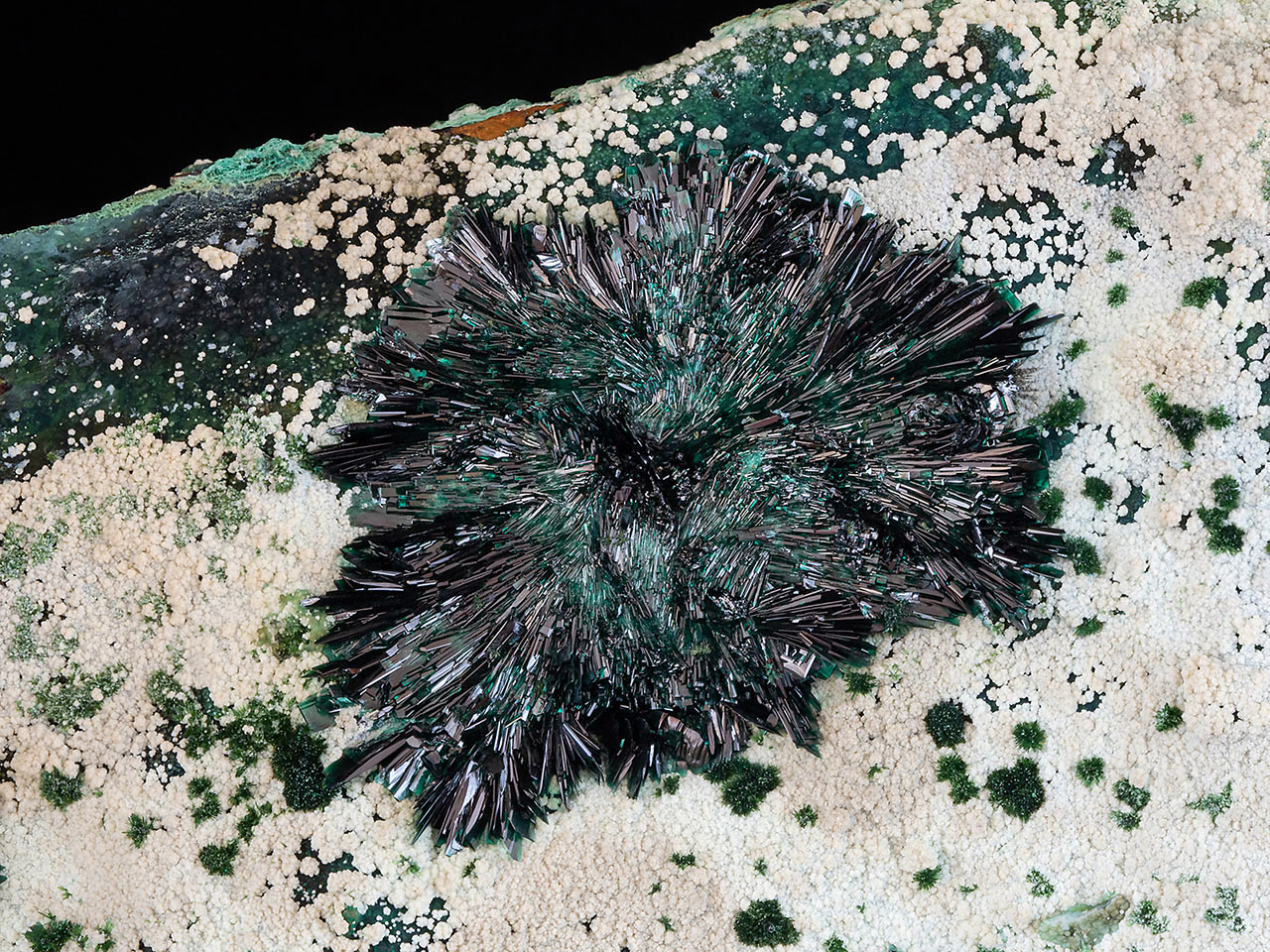
Atacamite is a member of atacamite group minerals, all being a basic chlorides with general formula X2(OH)3Cl, where X stands for Cu, Zn, Mn, Mg, Ni or their combinations.
Physical Properties of Atacamite
Atacamite is usually restricted to a limited range of green colors: blue-green, emerald green, or blackish-green. It exhibits some pleochroism in the green spectrum, and is translucent to transparent.
Atacamite hardness ranges from 3.0-3.5; its streak is apple green; and its density is quite restricted, between 3.745-3.778. Cleavage is perfect in {010} and fair in {101}. Twinning, if present, is complex. Luster ranges from adamantine to vitreous. Fracture is conchoidal. By weight, atacamite is 74.49 % CuO, 12.65 % H2O and 16.60% Cl.
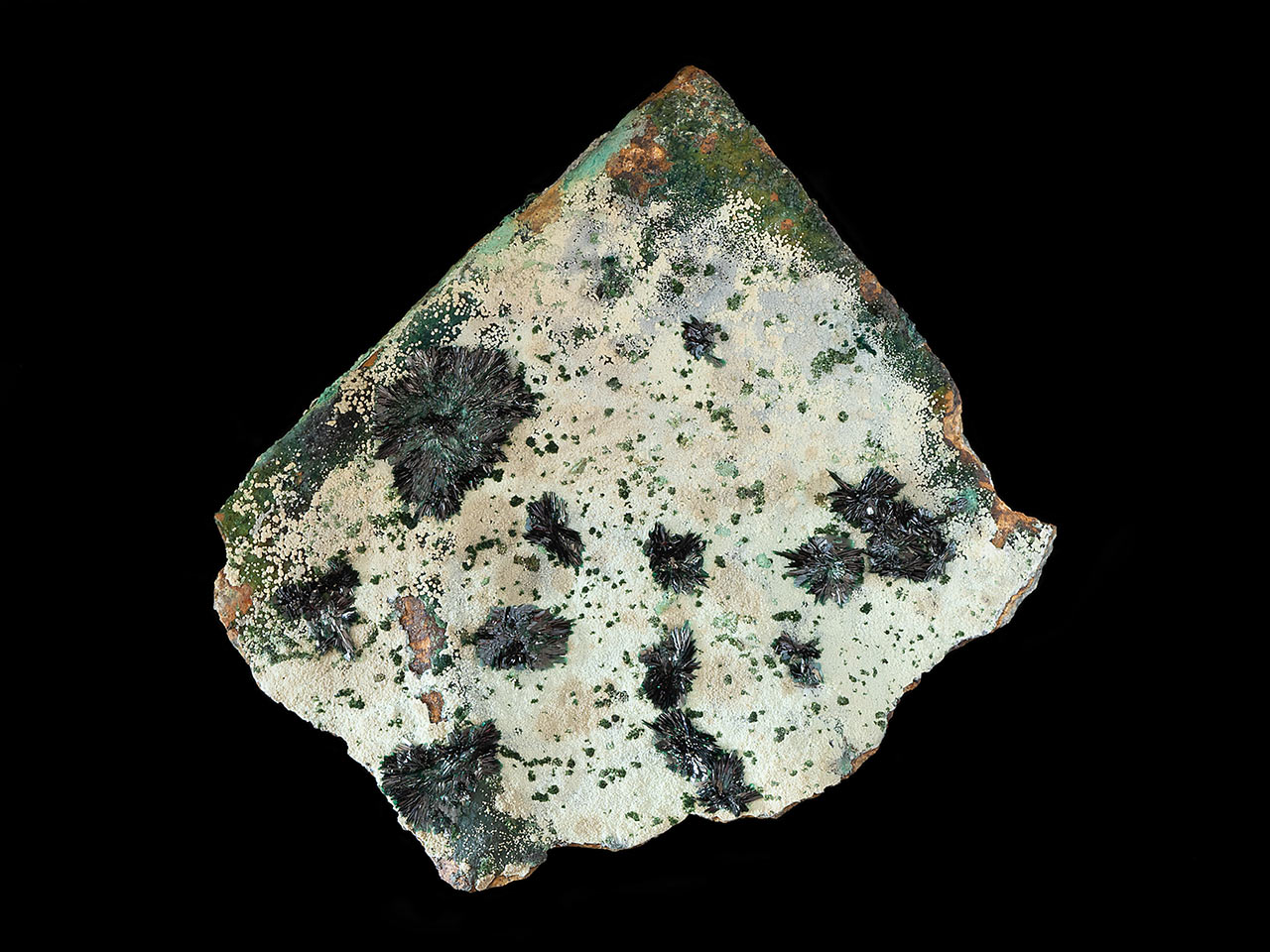
Atacamite will dissolve in dilute HCl without effervescence. There is strong suspicion that the atacamite darkens when exposed to the daylight and atmospheric oxygen. Historic specimens, found in South Australia, were reported as emerald green but they are all very dark green, almost black now.
Polymorphs
Two polymorphs (minerals with the same formula but different physical appearance) are recognized:
- Botallackite, a monoclinic secondary copper mineral identified in the Botallack Mine, Cornwall, England
- Clinoatacamite, a monoclinic secondary copper mineral identified at the Chuquicamata Mine, Calama, El Loa Province, Chile
Some resources incorrectly mention also the trigonal paratacamite as the atacamite polymorph. Despite misleading name, paratacamite Cu3(Cu,Zn)(OH)6Cl2 has a different chemical formula then atacamite and clinoatacamite.
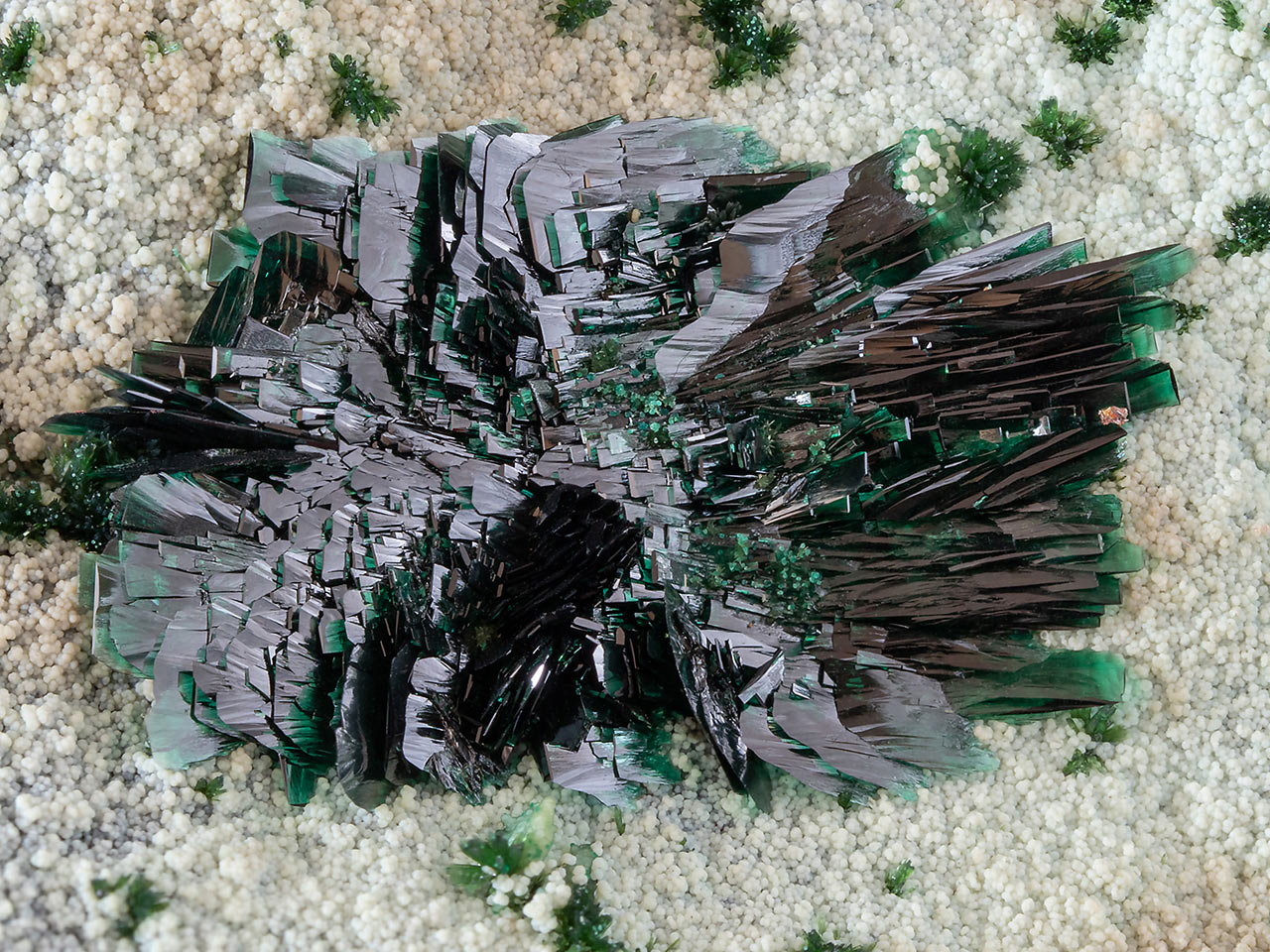
Alternative and Varietal Names
Atacamite is also known by the following names: alacamite, atakamite, arsenillo, chlorochalcite, copper muriate, halochalcite, Kupfersand, marcylite and remolinite.
Naming and Discovery
Atacamite was originally discovered in 1801 in the Atacama Desert of northern Chile, and described in 1802 by Demitri de Gallitzen, a Russian volcanologist and mineralogist, shortly before his death.
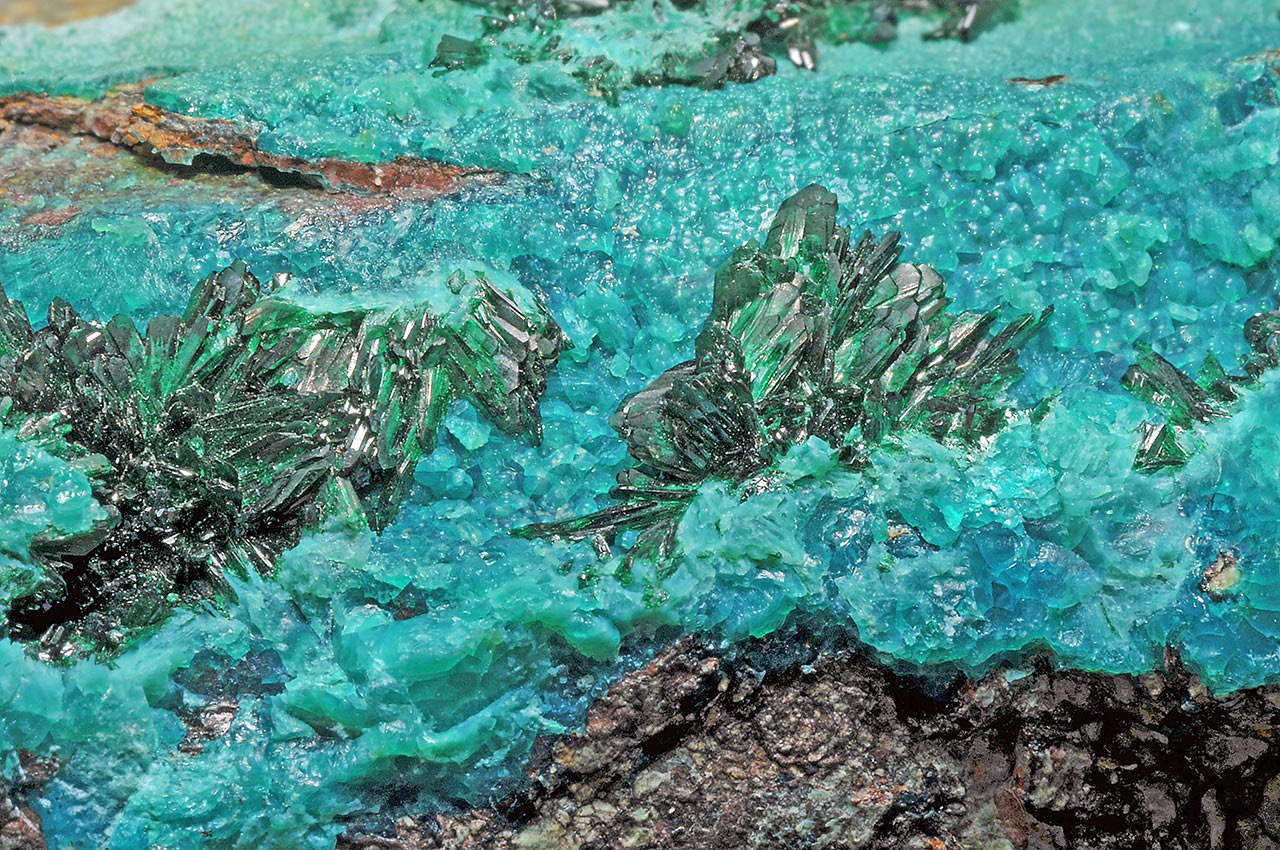
Atacamite Origin
The typical mode of formation of atacamite is secondary (weathering) oxidation of primary copper minerals in saline, arid (dry) environments in the presence of limited water. Most of the recorded locations all fit that parameter, except for volcanic occurrences in Italy (Mt. Vesuvius and Mt. Etna), which are described as sublimates from gaseous emanations.
Atacamite is very often associated with other secondary copper minerals, especially chrysocolla, brochantite, malachite, cuprite, pseudomalachite and libethenite. Other associated minerals include limonite, gypsum, and in the case of specimens from Atacama desert also halloysite.
In addition, black smokers (sulfidic hydrothermal vents on the seafloor) have been shown to produce atacamite precipitates in the TAG Hydrothermal Field in the Mid-Atlantic Ridge.
There are reports as well of atacamite crusts appearing as alteration on bronze and copper artifacts from prehistoric eras. Curiously, atacamite has been documented as a skeletal component of the jaws of bloodworms (Glycera sp.) living in shallow marine waters.
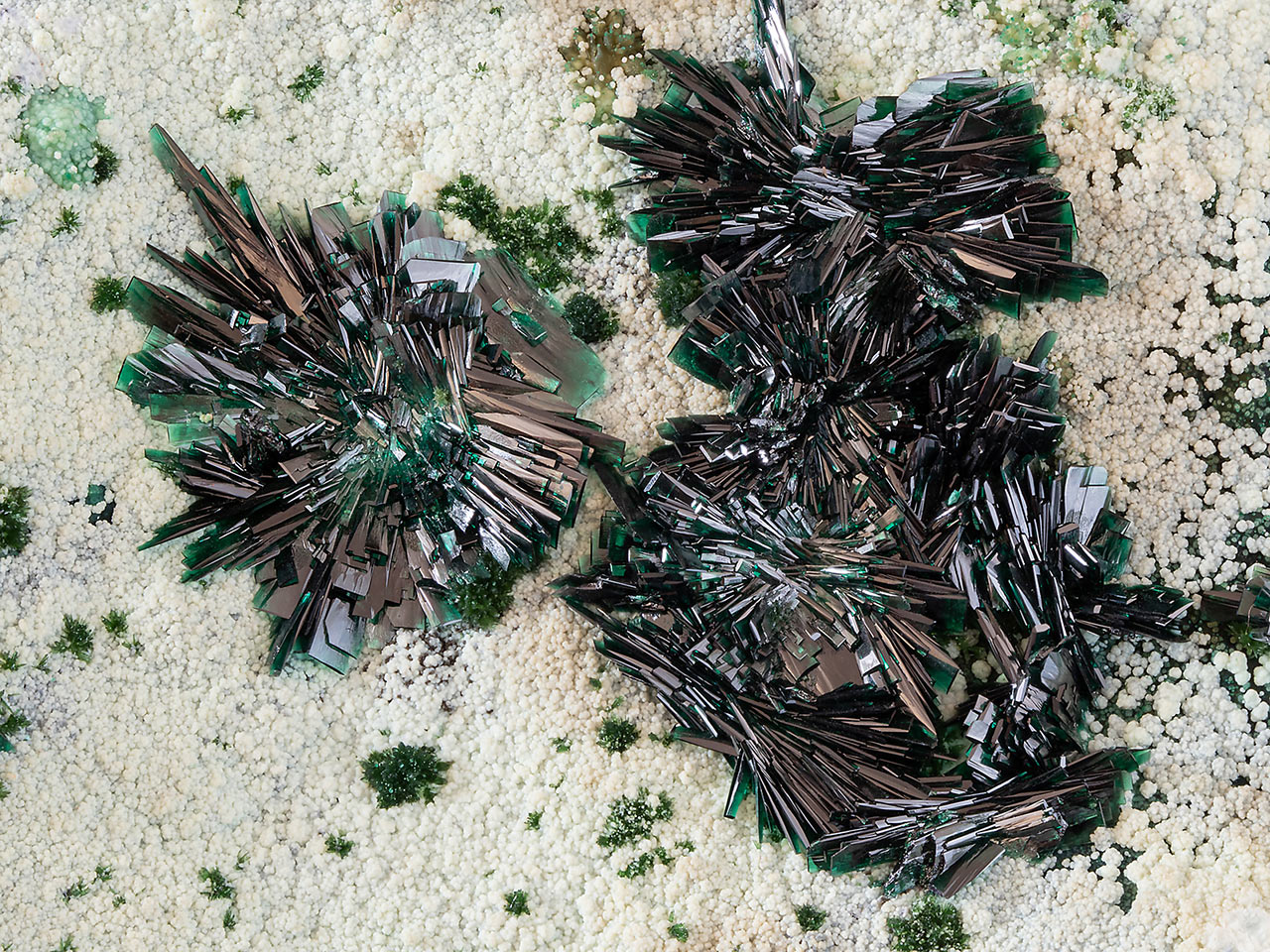
Applications
There are no industrial applications of atacamite, except as a minor ore in some copper deposits. As is the case for so many other minerals, some entrepreneurs promote atacamite for its imagined healing or spiritual properties.
Occurrence of Atacamite
Atacamite is a major ore mineral at the Chuquicamata Mine, Antofagasta in Chile, and a minor ore mineral at a number of other Chilean localities: Atacama; Carrizal, Collahurasi, Copiapo, Remolinos, Tarapaca and Tierra Amarilla.
The best crystals ever found originate from New Cornwall Mine near Kadina, South Australia. The largest crystals ever referred reached over 20 cm and there is plenty of specimens with 5-7 cm large crystals in major museums. Ore fields Wallaroo and Moonta are located near Kadina, these also produced numerous but significantly smaller atacamite crystals.
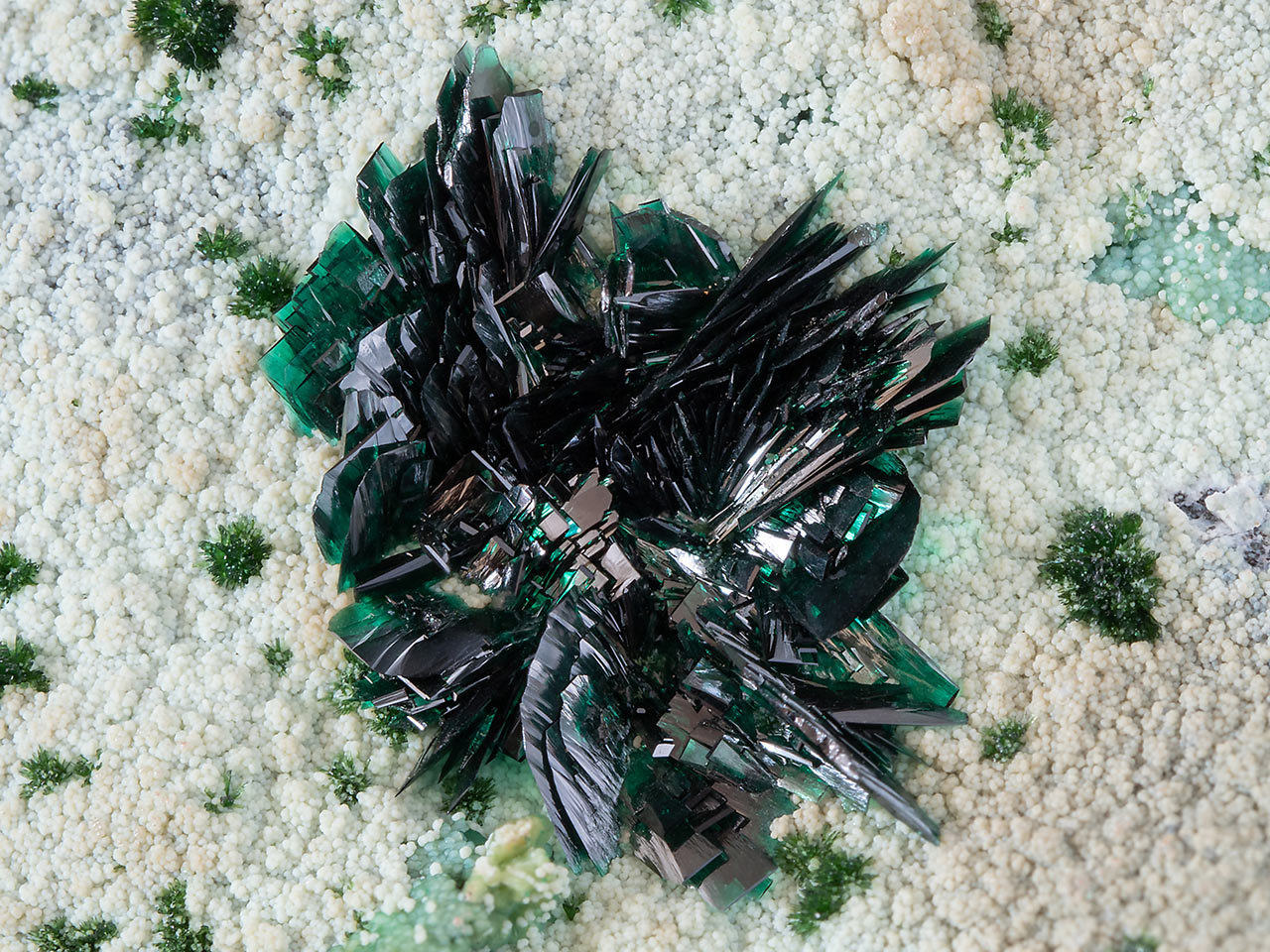
Classic English sites include Roughtongill, Caldbeck Fells, Cumbria; the Penberthy Croft Mine, St. Hilary; and the Botallack Mine, St. Just, Cornwall. Other important European site is Lavrion in Greece. Mt. Vesuvius, Campana and on Mt. Etna, Sicily, both in Italy, produce atacamite from volcanic vents (fumaroles).
Other localities include classics like Tsumeb in Namibia; the Turinsk Copper Mine, Ural Mountains, Russia; and the Kara-Kamys, Kazakhstan.
US localities include: Cochise County, at Bisbee; Pinal County, at the Mammoth-St. Anthony and San Manuel Mines, all in Arizona. Then Juab County, Tintic District in Utah. Rare atacamite finds with boleite are known from Boleo, Baja California, Mexico.





Comments